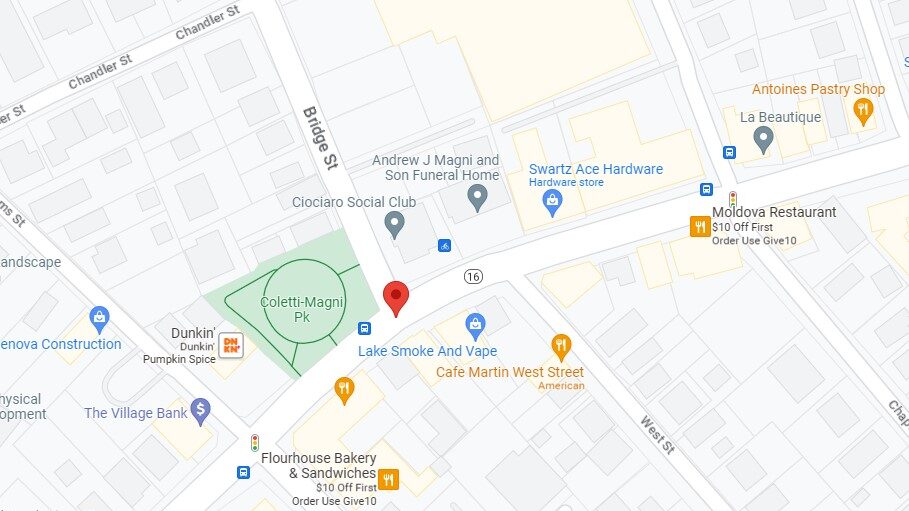BikePics
Newton is working on multiple projects to improve bicycle and pedestrian safety in the city. Photo by Bryan McGonigle
In late August, Tufts Professor Andrew Alex Bohm was riding a bicycle along Watertown Street in Newton when a UPS vehicle collided with him. Bohm was rushed to a nearby hospital, where he died from his injuries.
“This tragedy leaves us heartbroken and our thoughts and sympathies are with Andrew’s family,” Ed Olhava, chair of Bike Newton, said on behalf of that group.
That fatal crash has reignited calls for clear bicycle safety guidelines in the city.
Getting around
“Watertown Street has long been problematic to navigate,” Olhava said. “It is heavily used by bike commuters such as Andrew as it is a connection to the Charles River bike path.”
And that illustrates the point that Newton is promoting bicycle use over automobiles to cut down on traffic and fight climate change, but as Newton has grown in population, the growth has brought more traffic and made things more chaotic for bicyclists.
The issue of bike safety was even raised at a recent candidates debate at the Allen Center, when Ward 2 City Council candidates were asked if they would support initiatives and roadway renovations aimed at fostering more bicycling in the city.
“I wish that we would actually protect people that ride bikes,” candidate Peter Bruce said. “I ride a bike all the time, and I don’t get much protection on Walnut Street because there are all these signs that seem to indicate something, but nobody knows what they mean.”
Bruce, who was eliminated from the race in the preliminary election, said he wants the city to make things clearer on the road.
“I’m supposed to have the right of way when I ride on the main block, but nobody gives it to me,” Bruce said. “So I think the city ought to clarify what these rules are and get things straight.”
What’s being done?
As the city moves toward potentially rezoning its village centers for higher density housing, bicyclists are asking for road safety be a factor in planning. And there are other moves currently underway to protect bicyclists and other non-drivers on the roadways.
“Newton is in the process of developing our first formal bike/pedestrian network plan and Bike Newton anticipates that both Watertown Street and Bridge Street will be identified as key gaps in the network calling for bike facilities,” Olhava said. “In the near term, we are speaking with the city and hope to see some immediate changes to this area that will make it safer to walk, roll and bike. In addition, Bike Newton and other groups have been providing feedback on key transit corridors to the city for use in the bike/pedestrian plan.”
Joshua Ostroff, Newton’s director of transportation planning, said that plan will be up for a public hearing this fall.
“The city, for many years, has sought to promote bicycling for transportation and recreation—it was a centerpiece of the Newton Moves transportation plan—and it’s reflected in a few of the things we’re working on,” Ostroff said.

In addition to the bicycle/pedestrian plan Olhava mentioned, which is in draft form currently, Ostroff said the city will analyze future projects to make sure bike and pedestrian safety is a priority.
“This plan will identify future projects and prioritize them,” Ostroff said.
In more immediate terms, Ostroff continued, every infrastructure project (other than basic road repaving) will have components to improve safety for bicyclists and pedestrians.
“For example, on Albemarle Road, that may mean we’ll be adding bike lanes. And on Washington Street between Newtonville and West Newton, we will be redesigning that section of roadway to make it safer for bicyclists as well as pedestrians.
The city is also looking at bike safety education programs and Safe Routes to Schools projects to enhance walking and bike safety for kids.
“And we need to do more with drivers,” Ostroff said.
‘Share the road’
A new state law went into effect in April—An Act to Protect Vulnerable Road Users—that mandates drivers give anyone outside of a car four feet of safe passage. This includes people walking or rollerblading, people in wheelchairs and people on bicycles. Ostroff said enforcing that along with other safety mandates can help cut down on road accidents.
“Cycling is healthy, it’s non-polluting, it’s a way for people to get where they want to go without adding more congestion and more carbon emissions,” Ostroff said. “We just need to make sure it can be done safely, and that includes engineering, education and enforcement.”
Sometimes, Ostroff said, he makes recommendations for alternate routes depending on where people are going, but he added that on many of Newton’s streets, there just isn’t enough space on every road in the city for everyone—cars, pedestrians, bicyclists, rollerbladers, delivery trucks, dog walkers and more—to all use the roadway at the same time without making accommodations for each other.
And that’s where community cooperation comes in.
“Be mindful and respectful, and share the road,” Ostroff said.